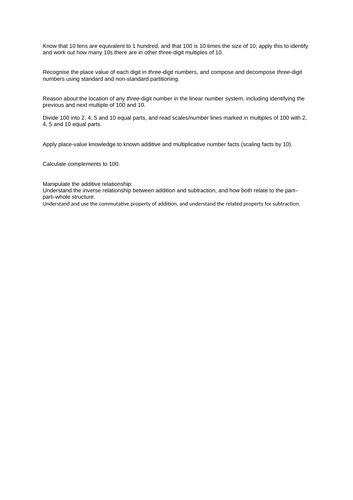










If helpful, please consider donating a book to my class! https://www.amazon.co.uk/hz/wishlist/ls/32HP9Q274WJ4K?ref_=wl_share
I have taken the NCETM Powerpoints and teaching guidance and combined them into a powerpoint for each teaching point, to use in class. I have also snipped the examples that I want to print out and use in books, in addition to our maths textbook pages. This is for the 4 teaching points in the first Year 3 unit, 1.17 (Spine 1: Number, Addition and Subtraction)
Teaching point 1: There are ten tens in 100; there are 100 ones in 100. 100 can also be composed multiplicatively from 50, 25 or 20, units that are commonly used in graphing and measures.
Teaching point 2: Known addition facts can be used to calculate complements to 100.
Teaching point 3: Known strategies for addition and subtraction across the tens boundary can be combined with unitising to count and calculate across the hundreds boundary in multiples of ten.
Teaching point 4: Knowledge of two-digit numbers can be extended to count and calculate across the hundreds boundary from/to any two-digit number in ones or tens.
Something went wrong, please try again later.
A great resource, thank you
Report this resourceto let us know if it violates our terms and conditions.
Our customer service team will review your report and will be in touch.
